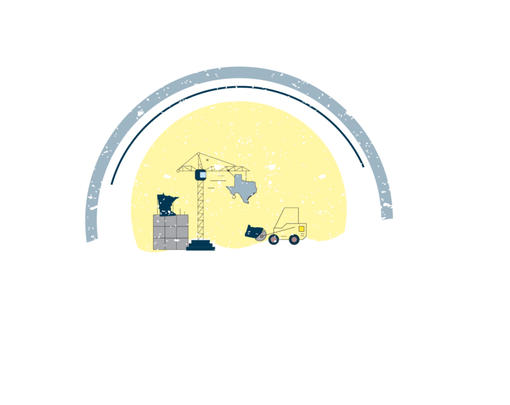Why must we factor gender equity into the institutional design of the next political and economic system?
It is a mistake to consider the persistent inequities linked to gender as merely expressions of residual cultural bias unconnected to the underlying systemic design. On the contrary, we need to recognize that our current economic system, in which we measure value through commodified profit, rather than through the lens of what creates and sustains thriving communities and individuals, systematically devalues economic activity that is currently divided along gender lines. It also biases how we understand these realities.
At the most basic level, women are paid less for the same work than men. Currently, women on average receive around 78 percent of the pay that white men receive, black American women receive 67 percent, and Hispanic American women receive 63 percent.1 Correcting this primary inequity is a baseline requirement of any serious systemic reconstruction. But this is clearly only a starting point. The current system is also designed to fundamentally undervalue massive amounts of care and affective work that is regularly relegated to women. Either such labor, as something that transpires inside a private household, is not recognized as work, or it is underpaid “domestic labor,” for the most part carried out by women of color and immigrant women in some of the most precarious and exploitative segments of the labor market.2
“Reproductive labor”—that is, not only the work of child rearing, but the whole complex of care work that makes social and economic life possible—is mainly consigned to women. Such work includes taking care of the aged and the infirm and developing nurturing out-of-home pre-school and other programs for the young. The entire range of caring and nurturing skills and jobs, though increasingly changing in its gendered roles, is a major realm of work demanding further cultural revaluation. Worldwide, the McKinsey Global Institute has estimated that women’s unpaid care work contributes approximately $10 trillion to the global economy—about as much as China’s GDP.3 Domestically, “caregiving is projected to be the largest occupation in the U.S. by 2020,” according to Princeton University’s Anne-Marie Slaughter—yet many such workers earn low wages and lack basic essentials like health insurance.4
Our current deeply gender-biased and ingrained systemic arrangements in these and other areas are commonly taken for granted, as if inevitable. Yet gender should not constrain what kinds of life-choices are available to each individual, especially when all of what the system defines as “women’s work” can equally be done by individuals of any gender. Nor should such work be underpaid or not compensated at all. For example, outside of the paid economy, women in the United States spend 60 percent more time on unpaid work compared to men—about four hours each day.5
A critical element of a community-sustaining system, then, is its capacity to nurture new and more equitably compensated roles for all who perform them—especially regarding who is to raise families, care for elders, and participate in community life, and under what conditions.
The challenge, however, goes well beyond the matter of changing attitudes and correcting bias and pay standards (though each of these is critical); it also involves the institutional and even spatial ways in which communities are oriented and in which work is assigned value—subjects rarely explored in narrowly ‘economic’ models. Gender equity is necessary not only to satisfy the clear ethical demands a feminist analysis presents, but also because without such equity, real DEMOCRACY and a much deeper CULTURE of community in general cannot be achieved or sustained.
What kinds of structures would a Pluralist Commonwealth use to support true gender equality?
Equal pay for equal work is a baseline requirement of any system committed to gender equality. This, however, is clearly only a beginning point. Critically, we need to ensure that care work is valued in equitable ways. Family leave for the birth of a new child should be guaranteed and made far more generous than most programs currently require. Both to assure gender equity and for well documented reasons relating to early childhood development, parental leave should also be structured to incentivize and support equal participation in child-rearing from both parents. Beyond such policies, we can look towards structures that recognize and compensate the kinds of economic activity that are currently rendered invisible in the wage-labor economy. A carefully structured unconditional basic income, by offering a baseline means of support for those who prioritize care work over paid labor, would be a critical step forward.
The Pluralist Commonwealth emphasis on community also brings gender equity into systemic design by understanding how new directions in city planning can also help insure more egalitarian gender outcomes and a shift not only in specific roles but in CULTURE. One crucial strategy that also seeks to promote LIBERTY to live lives in which gender is not determinative of social roles is to build what Yale Professor Dolores Hayden terms “the non-sexist city.” The traditional “nuclear” family, organized in terms of a clearly patriarchal division of labor and authority, has been reinforced spatially by de facto city planning choices related to highway construction and home mortgage financing. In the post-World War II suburban system especially, the location of homemaking and child rearing, on the one hand, and of most “economic” activity and jobs, on the other, have been radically separated with commuting taken for granted. This spatial arrangement facilitated and enforced a division of roles between men and women in economic life and child-rearing.
While social norms may have at least partially advanced, patterns of planning which separate work and home with a long commute persist, making it difficult to equitably share responsibilities at home and in the workplace. At the heart of next system planning for “a non-sexist city” is a coordinated approach to locate jobs, homes, and community child-rearing in much greater proximity—and to insure through planning much greater ongoing stability of community life. Putting a premium on LIBERTY should also encourage much greater creativity here. By planning not just for nuclear couples, but instead envisioning a plurality of different ways of living and working in various kinds of extended cooperative arrangements, we can work to undo the way our spatial institutions favor a particular combination of gender, sexuality, and economic roles. In all of this, we again come back to the need for the kinds of Pluralist Commonwealth local, regional, and national democratized economic institutions that are open to planning that takes community values (rather than profit maximization) seriously.
A truly fundamental baseline requirement is the eradication of male violence against women, an issue both enforced by the current system’s traditionalist gender-biased culture, and by its inability to guarantee meaningful work. In promoting roles and attitudes of male superiority, on the one hand, and simultaneously undermining job stability and dignity, on the other, the current system regularly nurtures the psychological preconditions of pervasive violence against women. To take just one jarring example, a widely discussed, if somewhat controversial, 2011 survey by the Centers for Disease Control and Prevention found that nearly 1 in 5 women in the United States (19.3 percent) had been raped at some point in their lives.6
A system that aims to achieve genuine gender equality and community must not only address a culture of toxic masculinity, it must provide the institutional requirements of secure and meaningful work and income for both men and women.
Where are important elements of a more gender equitable system being built today?
Preliminary steps in the direction of equal pay for equal work have been taken in a number of communities, as have new measures mandating extended (paid) family leave for both men and women, along with (in some communities) support of high quality day care.
The work of Ai-Jen Poo and Caring Across Generations is an important campaign advocating for better structures to provide robust mechanisms of elder care (most of which, again, disproportionately and inequitably fall to women in the current system). They emphasize a plurality of solutions, from forward-thinking state subsidies, to cooperative and other high-road business models, to support professional caregivers, to inventive solutions like care-work “time-banking” based on the Japanese model, which creates new institutional support for a trading system to encourage swapping care responsibilities in different cities.
In Vienna, Eva Kail and her colleagues in the city’s urban planning division have embraced “gender mainstreaming”—the design of public space and transit systems to account for different patterns of economic and social activity beyond that of the stereotypically male commuter. For example, studies found that those involved in care work had much more varied schedules, used public and pedestrian transportation more frequently, and benefited from additional lighting for safety and wider sidewalks or staircases for strollers or wheelchairs. Proposals also included apartment buildings with on-site greenspace, childcare services, or doctor’s offices.7
This approach emphasizes the role that spatial architecture plays in gendering access to the public sphere, and also helps to further clarify dimensions of a “non-sexist” city. To take another example, Johanna Brenner has described the creative approach of publicly subsidized, multi-stakeholder cooperatives in Italy and Quebec that provide childcare and eldercare.8 Such cooperatives not only partially decommodify care work, their participatory and deliberative structure promote a more solidaristic, democratic culture—providing a basis for further political efforts and the reconstruction of community in general.
In all of this, the binary categories “feminine” and “masculine” also need to be carefully reviewed, scrutinized, and revaluated. One of the most important trajectories of modern cultural development involves acknowledgment of the fluidity of different gender identifications, and the necessity in a Pluralist Commonwealth of cultural development that takes a reassessment of traditional and increasingly obsolete and restrictive gender identifications seriously.
See also:
Further reading
Allan Johnson, The Gender Knot: Unraveling Our Patriarchal Legacy (Philadelphia, PA: Temple University Press, 2014).
Dolores Hayden, “What would a non-sexist city look like?” Signs 5, no. 3, (1980).
J.K. Gibson-Graham, A Postcapitalist Politics (Minneapolis, MN: University of Minnesota Press 2006).
Johanna Brenner, “Democratizing Care” in Gender Equality: Transforming Family Divisions of Labor, eds. Janet Gornick and Marcia Meyers, (New York, NY: Verso, 2009), 182.
Kathi Weeks, The Problem with Work: Feminism, Marxism, Antiwork Politics, and Postwork Imaginaries (Durham, NC: Duke University Press, 2011).
Nancy Fraser, Fortunes of Feminism: From State-Managed Capitalism to Neoliberal Crisis (Brooklyn, NY: Verso, 2013).
Riki Wilchins, Queer Theory, Gender Theory: An Instant Primer, (Bronx, NY: Magnus Books, 2014 [2004]).
Rosemarie Tong, Feminist Thought: A More Comprehensive Introduction (Boulder, CO: Westview Press, 2014).
- 1Bureau of Labor Statistics, Usual Weekly Earnings of Wage and Salary Workers: Third Quarter 2016 (Washington, DC: US Department of Labor, October 20, 2016), accessed November 4, 2016.
- 2Linda Burnham and Nick Theodore, Home Economics: The Invisible and Unregulated World of Domestic Work (New York, NY: National Domestic Workers Alliance, 2012).
- 3Jonathan Woetzel et al., The Power of Parity: How Advancing Women’s Equality Can Add $12 Trillion to Global Growth (The McKinsey Global Institute, September 2015), 4.
- 4Anne-Marie Slaughter, “The Work the Makes Work Possible,” The Atlantic, March 23, 2016, accessed November 4, 2016.
- 5Claire Cain Miller, “How Society Pays When Women’s Work Is Unpaid,” The New York Times, February 22, 2016, accessed November 4, 2016.
- 6Matthew Briedling, Prevalence and Characteristics of Sexual Violence, Stalking, and Intimate Partner Violence Victimization — National Intimate Partner and Sexual Violence Survey, United States, 2011 (Washington, DC: Centers for Disease Control and Prevention, September 5, 2014), accessed November 4, 2016.
- 7Clare Foran, “How to Design a City for Women,” Citylab, September 16, 2013, accessed November 4, 2016.
- 8Johanna Brenner, “Democratizing Care” in Gender Equality: Transforming Family Divisions of Labor, ed. by Janet Gornick and Marcia Meyers, (New York: Verso, 2009), 182.





























